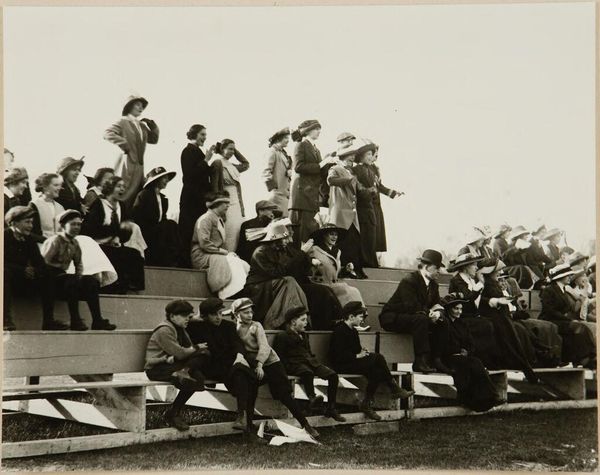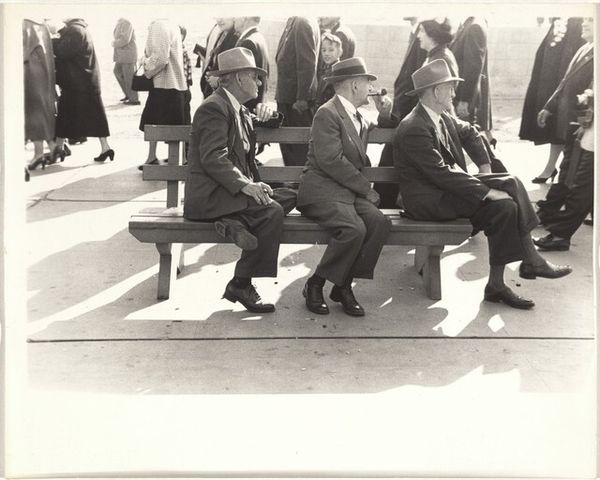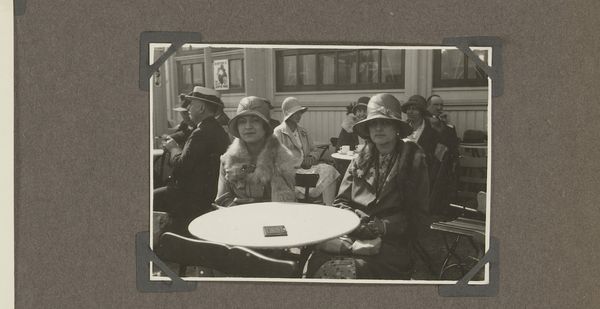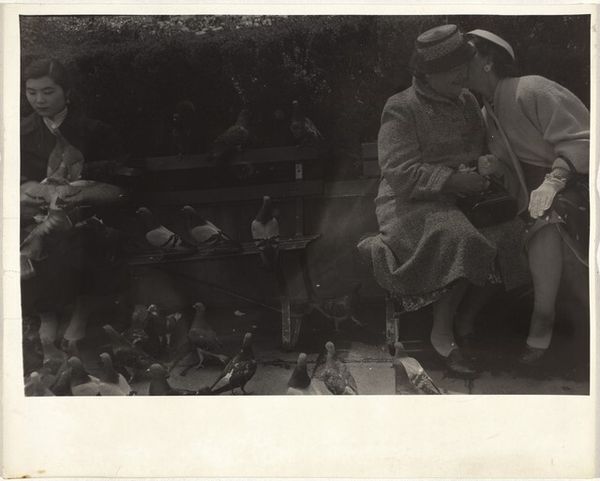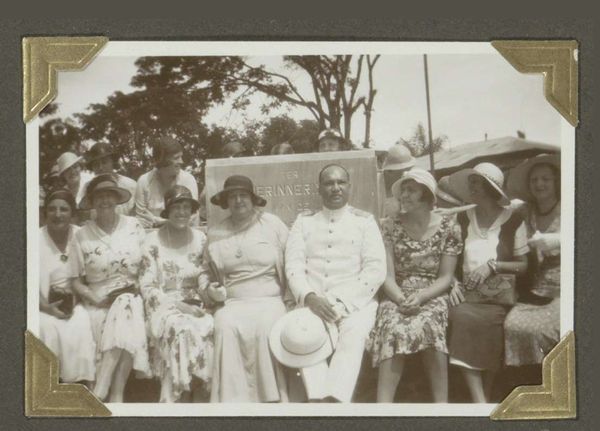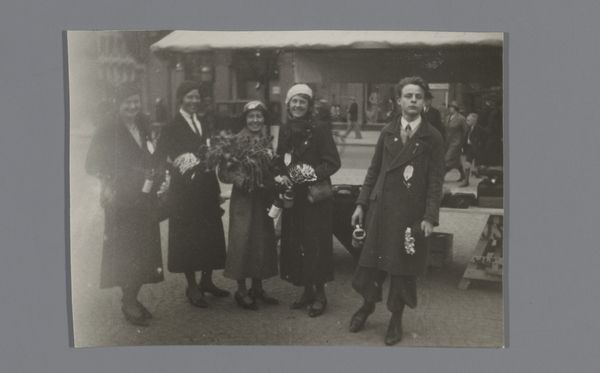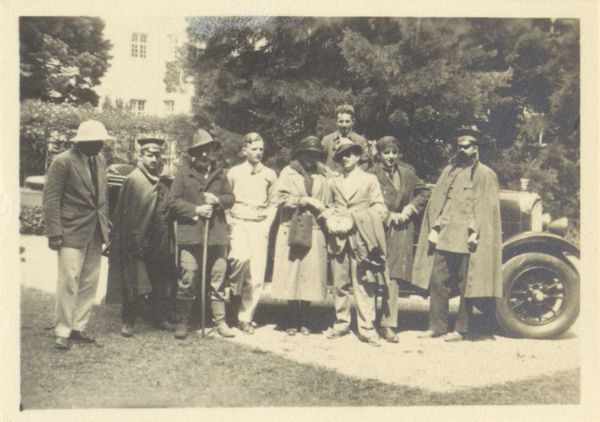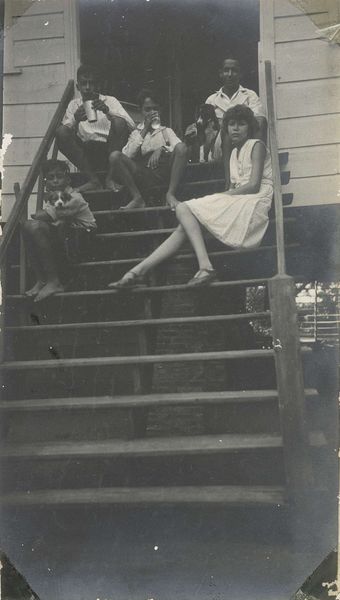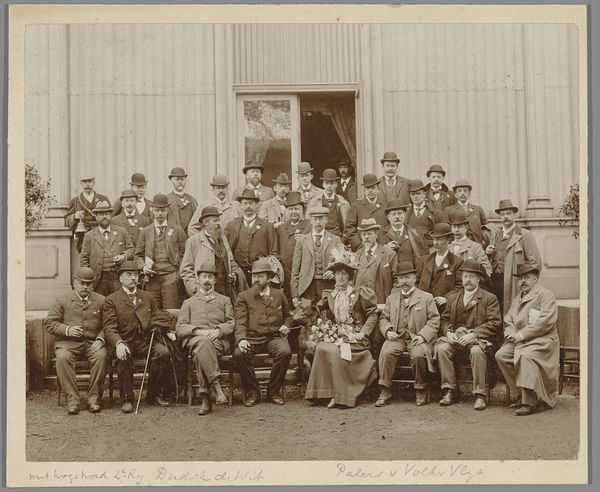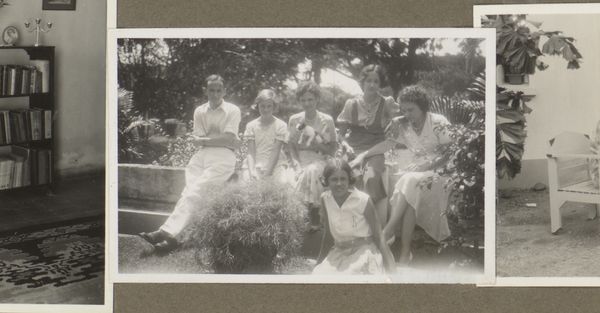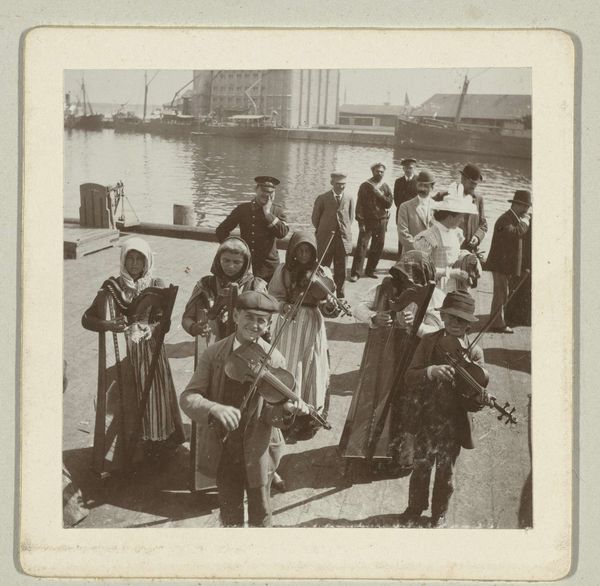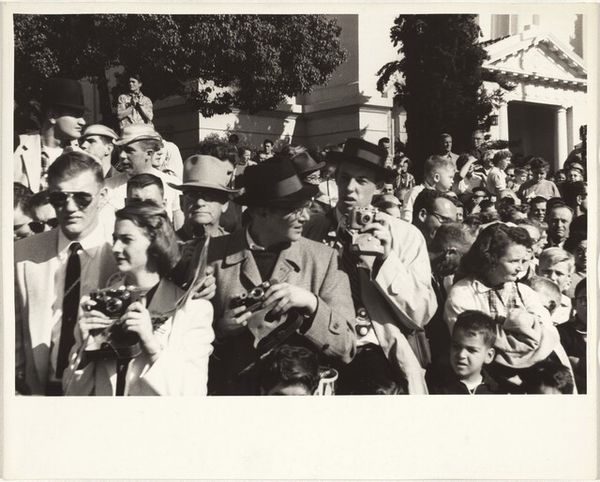
print, photography, gelatin-silver-print
# print
#
landscape
#
archive photography
#
street-photography
#
photography
#
culture event photography
#
historical photography
#
group-portraits
#
gelatin-silver-print
#
ashcan-school
#
modernism
#
realism
Dimensions: sheet: 20.3 x 25.2 cm (8 x 9 15/16 in.)
Copyright: National Gallery of Art: CC0 1.0
Curator: Welcome. Let’s spend a moment with Robert Frank’s gelatin silver print, “Spectators, parade—San Francisco” from 1956. What is your immediate impression? Editor: The repetition is striking—rows of seated figures, mostly men, nearly all wearing hats. It feels restrained, almost melancholic. Curator: Frank's use of composition here, dividing the crowd into stratified layers, creates a formal rigidity. Observe how the lines of the architecture frame the subjects, emphasizing their posture and the geometric pattern. Editor: It feels symbolic to me. They are an audience, passively watching. I read it as a statement on societal roles and spectatorship in the mid-20th century. Considering Frank’s own outsider status as a Swiss immigrant, perhaps this captures a certain detached observation of American social dynamics. Curator: The light is exquisitely modulated. See how Frank has played with grayscale to define forms and subtly create emphasis without sacrificing the picture’s flat pictorial structure. Editor: True, but I also see commentary in the subjects' dress. These are individuals conforming to a social norm. The hats become a visual shorthand for conformity, but the nuances in their individual expressions hint at something more. There is one person wearing a baseball hat rather than a suit hat that certainly jumps out as different. Curator: It’s the balance he achieves. The interplay between dark and light echoes the subtle discord of individuals existing together and, simultaneously, apart. There are no large shifts. Editor: Indeed. I wonder about the parade itself—what were they watching? Knowing Frank's broader work, which often critiques American social issues, the "parade" could be interpreted as a metaphor for the illusions of prosperity and unity in the post-war era. Curator: A strong interpretation. In considering Frank’s place within the Ashcan school, we must remember how interested his cohort were in breaking the rules of how photographic forms should be put together. Editor: It resonates as a commentary that remains potent, inviting us to critically consider what spectacles we consume and the roles we play as observers and participants within society. Curator: An artwork for continual, renewed observations.
Comments
No comments
Be the first to comment and join the conversation on the ultimate creative platform.
